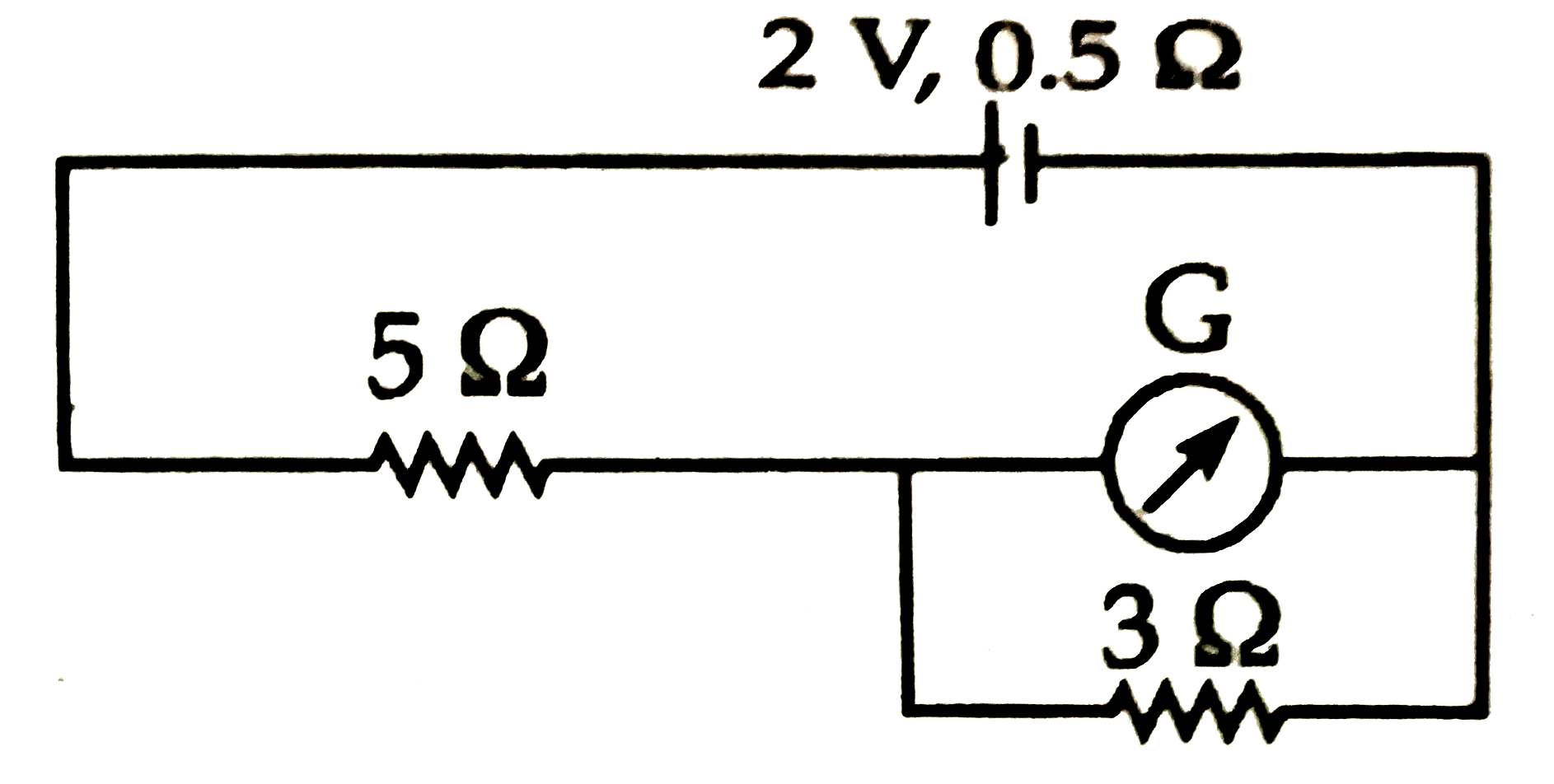The resistance of the shunt required to allow 2% of the main current through the galvanometer of resistance 49Ω is
1Ω
2Ω
0.2Ω
0.1Ω
The correct Answer is:A
Equating potential drop across shunt and galvanometer, we get (l−lg)S=lgG
where S is the shhunt resisrtance and G is galvanometer resistance.
given lg=2100l
⇒(l−2100l)S=49×2100l
or S=1Ω
Topper's Solved these Questions
Similar Questions
Knowledge Check
- Question 1 - Select One
The value of shunt to be used to pass 1/10th of the total current through a galvanometer of resistance 100Ω is
A41.11ΩB31.11ΩC21.11ΩD11.11Ω - Question 2 - Select One
To send 10% of the main current through a moving coil galvanometer of resistance 9Ω, shunt S required is
 A81ΩB1ΩC10ΩD9Ω
A81ΩB1ΩC10ΩD9Ω - Question 3 - Select One
To send 10% of the main current through a moving coil galvanometer of resistance 9Ω, shunt S required is
 A81ΩB1ΩC10ΩD9Ω
A81ΩB1ΩC10ΩD9Ω
A galvanomter of resistance 50Ω is shunted by a resistance of 5Ω. What fraction of the main current passes through the galvanometer? Through the shunt?
View SolutionA galvanometer of resistance 100ohms is shunted so that only 1/11 of the main current flows through the galvanometer. The resistance of the shunt is
View SolutionA moving coil galvanometer has a resistance of 990Ω. in order to send only 10% of the main currect through this galvanometer, the resistance of the required shunt is
View SolutionIn an ammeter, 4% of the main current is passing through the galvanometer. If shunt resistance is 5 Ω, then resistance of galvanometer will be
View SolutionIn an ammeter, 4% of the main current is passing through the galvanometer. If shunt resistance is 5 Ω, then resistance of galvanometer will be
View Solution


